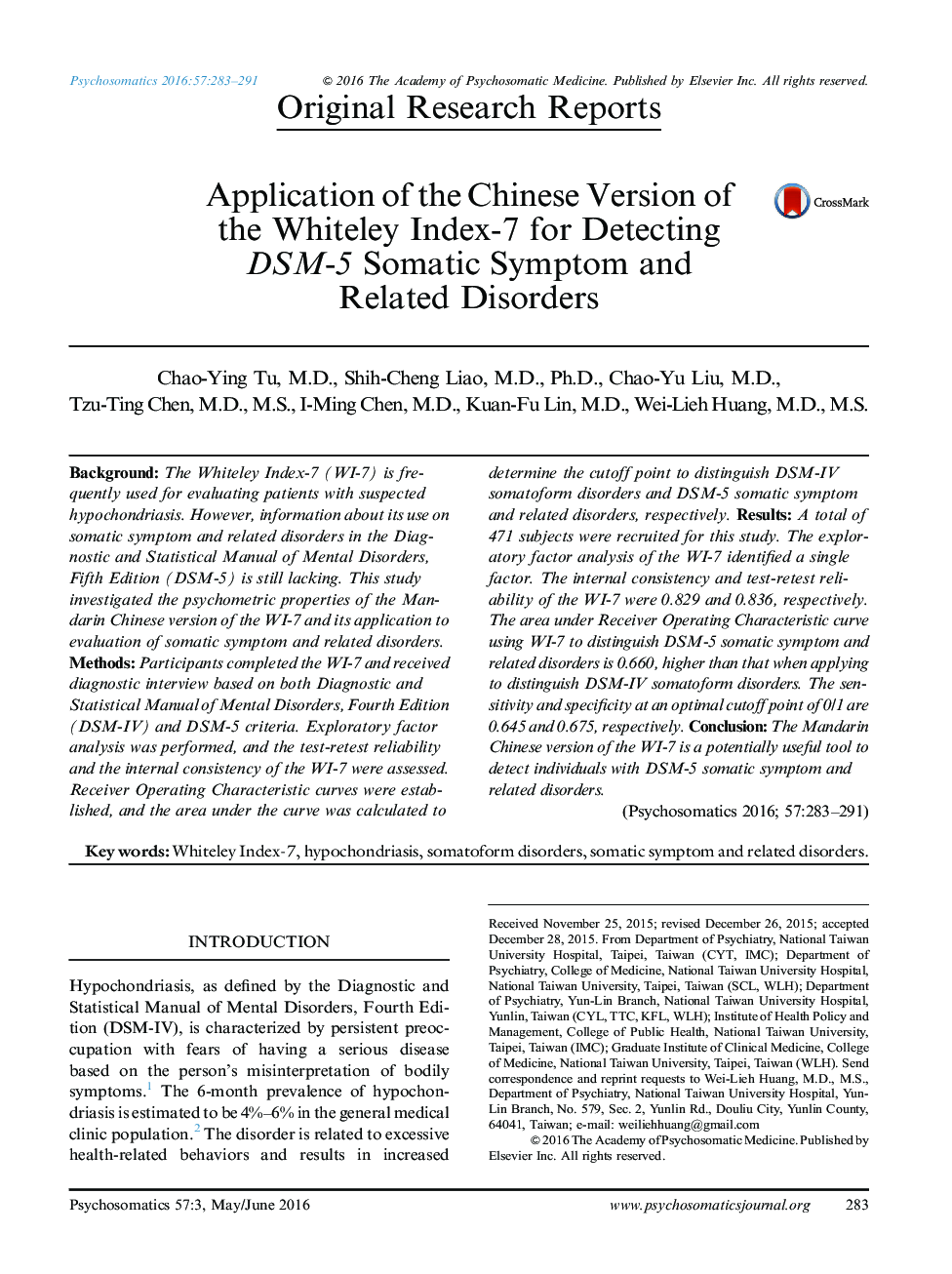| Article ID | Journal | Published Year | Pages | File Type |
|---|---|---|---|---|
| 337341 | Psychosomatics | 2016 | 9 Pages |
BackgroundThe Whiteley Index-7 (WI-7) is frequently used for evaluating patients with suspected hypochondriasis. However, information about its use on somatic symptom and related disorders in the Diagnostic and Statistical Manual of Mental Disorders, Fifth Edition (DSM-5) is still lacking. This study investigated the psychometric properties of the Mandarin Chinese version of the WI-7 and its application to evaluation of somatic symptom and related disorders.MethodsParticipants completed the WI-7 and received diagnostic interview based on both Diagnostic and Statistical Manual of Mental Disorders, Fourth Edition (DSM-IV) and DSM-5 criteria. Exploratory factor analysis was performed, and the test-retest reliability and the internal consistency of the WI-7 were assessed. Receiver Operating Characteristic curves were established, and the area under the curve was calculated to determine the cutoff point to distinguish DSM-IV somatoform disorders and DSM-5 somatic symptom and related disorders, respectively.ResultsA total of 471 subjects were recruited for this study. The exploratory factor analysis of the WI-7 identified a single factor. The internal consistency and test-retest reliability of the WI-7 were 0.829 and 0.836, respectively. The area under Receiver Operating Characteristic curve using WI-7 to distinguish DSM-5 somatic symptom and related disorders is 0.660, higher than that when applying to distinguish DSM-IV somatoform disorders. The sensitivity and specificity at an optimal cutoff point of 0/1 are 0.645 and 0.675, respectively.ConclusionThe Mandarin Chinese version of the WI-7 is a potentially useful tool to detect individuals with DSM-5 somatic symptom and related disorders.
